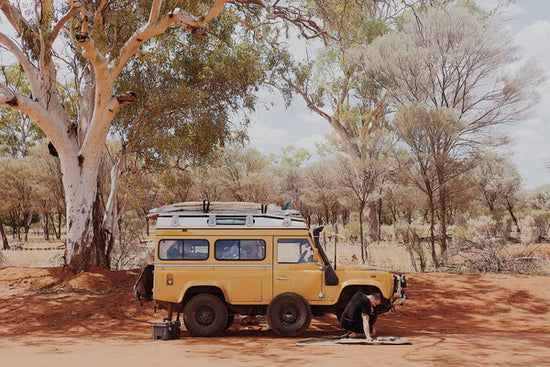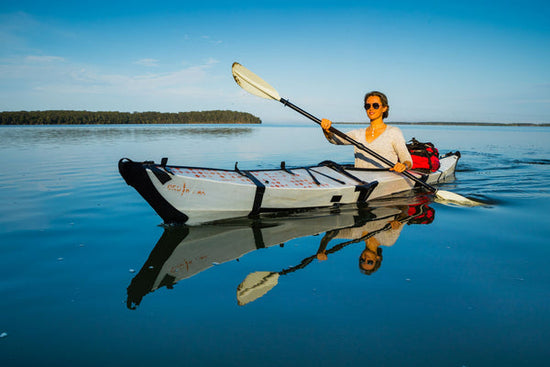
Time operates on another wavelength in the remote regions of the NT. It becomes non-existent, thoughts slip away, and you become overly present, constantly struck with awe & wonder.
This is a glimpse into the land before time, where seasons & time are expressed through the cycles of nature, from the subtle variations in the weather, the plants that are in bloom and the bush foods that are most abundant. All these shifts were indicators that helped the indigenous people know when to hunt, gather and take shelter. Arnhem Land is a unique region of Australia where indigenous culture remains flourishingly rich & intact. The knowledge and wisdom attained from the elders here have been passed down to the emerging generations. Life remains not too dissimilar from what it was hundreds of years ago, Living in harmony with the land; Simple and beautiful, the way it should be.



Kicking off the trip in Darwin, I was met by Zach, who rocked up in a red dust-coated Land Cruiser; he had just driven the central road over from East Arnhem. As we uncaked the layers of mud, he told tales of life out in the bush. Instantly, I knew we were in for a cracking time. We had a night of recharging and packing before making tracks to Kakadu. A new hike had just opened, and with permits in place, we camped two nights at the top of Jim Jim Falls. Each night, to our delight, we had these incredible vistas all to ourselves. Hiking up the creek during the day, we would discover overhanging rock shelters with ancient rock paintings. Lying on our back deciphering the stories inscribed thousands of years ago.



I was continuing along the water's edge, bush-bashing through overgrown foliage. Soon to be greeted by a nest of green-ants, which catapulted onto my chest. Being my first encounter with these fellas, I freaked, then to hear Zach's chuckling reply. "Just pick them off and eat them; they taste great". So I did, and to my surprise, delicious bush tucker indeed. High in vitamin C & protein, they have been used medicinally by indigenous people to relieve colds & sore throats. Cooling off from the sweltering heat, we would jump into billabongs along the way and return to camp on the white sandy banks, before proceeding to the edge of the escarpment for the end-of-day light show.


Looking out over the vast lands into the hazy horizons, witnessing the ever-changing palettes morph from soft reds into orange greens, which soon swallowed the sky. The wildlife was in sync as the symphony of sounds reverberated from inside the gorge and slowly faded into a still silence as evening commenced. The sky's curtain opened, revealing a dazzling display of stars. Waking up in the night to peer out of my swag, I would see shooting stars crisscrossing the galaxies, thinking to myself how magical this country is.



Gunbalanya was our next destination where we had a local connection, Sean. He kindly volunteered to show us up Injalak Hill, a site now restricted to locals due to unfortunate incidents with tourists. As we entered, he would converse with the spirits and introduce our presence, letting them know we were welcome. Sean spoke of his land not as a separate entity but as one, an interconnected aspect of the whole. This interconnectedness equates to a moral responsibility to care for the land. Guiding us around the gallery to view some of the largest rock canvases we had seen, from early Tasmanian Tiger sightings to Yirgana (the creation mother), all imprinted on the surfaces as a way of recording history and telling stories from walks far and wide. Insisting we return back the following day to show us the caves. We willingly accepted his invitation and went walkabout that next morning. Sean was a true barefoot bushman, with hooves calloused like the rocky terrain he was stomping over. He was tuned in and grounded to the land, sighting animal tracks before they panned into our peripheral vision. Being a responsibility to all Indigenous people is the maintenance of land, which involves cool burning - a practice that involves burning the dry underbrush. This process generates patchy habitats preferred by small animals and prevents lightning and wildfires from consuming the land. As he lit fires along the way, we soon arrived at an enormous shelter situated in the center of stone country. The scale of an underground car park and the equivalent of a mansion was once home to many. Kid's hand marks were blown into art all over walls with crushed ochre, saliva and blood. As we looked out the opening, we could see the trail we had just walked on set ablaze and roaring across the countryside. Returning back along what was now a clean slate track. He later told us how he's planning to make his own survivor doc; after witnessing his skills first-hand. I have no doubt it will be a success and make his children proud.







The following few days we drove from dusk till dawn along endless corrugations. After sighting many wrecks on the side of the road that had gone out with a bang. With a few leaks under the hood, we realised that we were also running the gauntlet, fingers crossed, hoping all would hang in and get us across the line. Luckily, we only had a few minor hiccups, nothing like a bit of bush mechanics, which did the trick. This usually involved ripping off anything unnecessary. After all, this was a trip of learning things the essential way. No bells and whistles, living life raw. With only passing a handful of vehicles in a 15-hour drive, you get a sense of the remoteness & isolation of the communities that live out here. Arriving at Ramingining, we stopped at Bula'Bula Arts to see the local artists hard at work weaving. Sourcing their materials entirely from the surrounding bush and making die's from natural minerals and plant roots. Soaring across the countryside, I'd constantly be glancing out the window, observing the unique biodiversity. From the surreal towering termite mounds - mysteriously aligned to the earth's magnetic field, all facing in the same direction like a needle on a compass. As the day's final hours would unfold, the golden sun flickered through the gums to illuminate the fresh growth from prehistoric cycads that survived the Jurassic era. All so wild and diverse.









After a few days of catching our breath in Yirrkala and exploring the coastal surrounds of lush native flora and bushlands set alongside sheer red cliffs that would collide with the pristine blue waters. We got a call up to drop a local member back to his homeland of Birany Birany. Not communicating with his family to find out where they were, we followed his Yolngu intuitive senses to discover them dining on the banks of the mangroves eating the local cuisine, where we helped spear for mud crabs. Continuing along to the next bush restaurant, where a mob was digging for yams. They kindly invited us to join their open field setting, speaking of their ancestral lineage all originating from the exact location, and they now account for holding that same legacy.



The finale to the trip was sailing out to Granites, a secluded island off the coast of Nhulunbuy, on the majestic vessel named 'Two-Up'. The beers cracked as the wind kicked into the sails, and we glided across the glistening waters. Catching a Mackerel on the way, we prepped that for dinner and partied into the evening as the full-moon light caressed across the ripples of water in rhythmic formation. A perfect way to wind up the trip and reflect back on all memories so vividly ingrained.




We acknowledge the Traditional Owners of the country throughout Australia and recognise their continuing connection to land, waters and culture. We pay our respects to their Elders, past, present and emerging.



